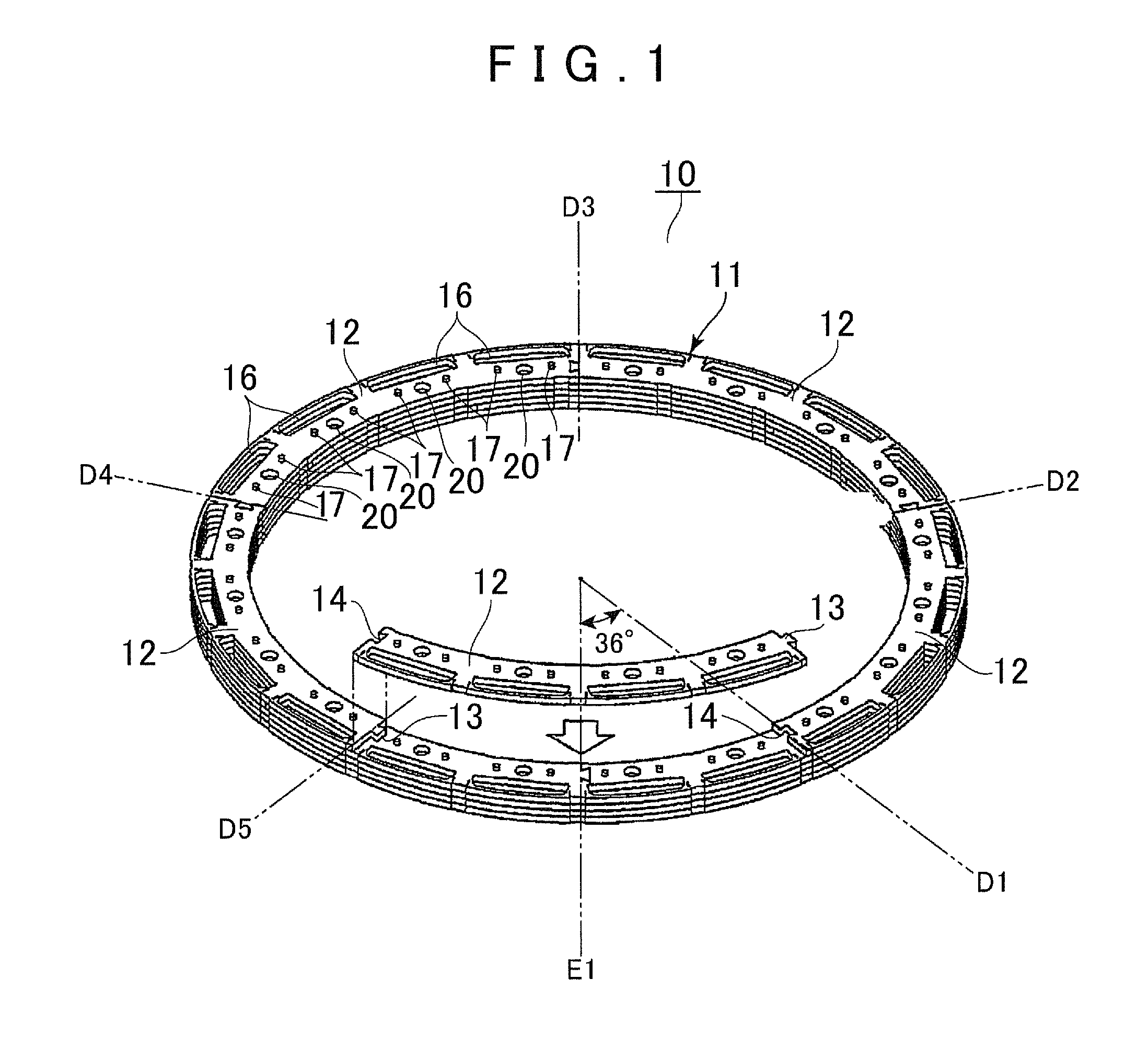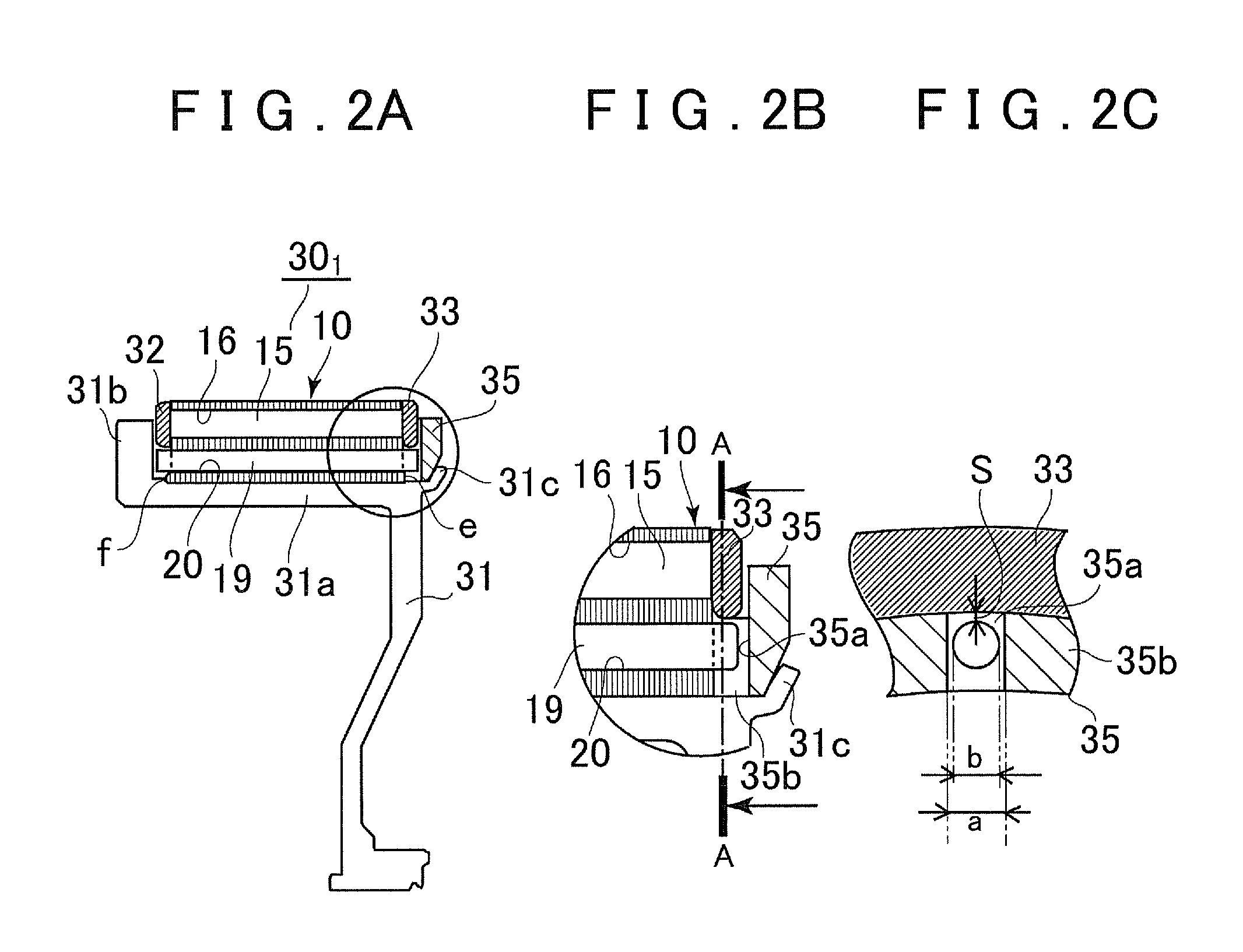Rotor of rotating electrical machine
a technology of rotating electrical machines and rotating shafts, which is applied in the direction of dynamo-electric machines, magnetic circuit rotating parts, and shape/form/construction of magnetic circuits, etc., can solve the problems of reducing rotation strength, increasing material cost, and increasing overall cost, so as to increase material cost, increase overall cost, and increase the diameter of the pin
- Summary
- Abstract
- Description
- Claims
- Application Information
AI Technical Summary
Benefits of technology
Problems solved by technology
Method used
Image
Examples
Embodiment Construction
[0038]A first embodiment of the present invention will be described below with reference to the accompanying drawings. In the following description, radially outside refers to the side in the direction of a centrifugal force that acts on a pin extending through a rotor core, and the stacking direction refers to the direction in which core plates are stacked and refers to the same direction as the axial direction of a rotating shaft when the rotor core is attached to a rotor hub.
[0039]As shown in FIG. 1, a rotor core 10 for an interior permanent magnet (IPM) synchronous motor (a rotating electrical machine) has a cylindrical shape formed by stacking a plurality of annular core plates 11. In order to improve material yield, each core plate 11 is formed by a plurality of (in the present embodiment, five) core plate pieces 12 equally divided in the circumferential direction. Each core plate piece 12 is formed by an arc-shaped thin plate. Each core plate piece 12 has a protruding portion...
PUM
 Login to View More
Login to View More Abstract
Description
Claims
Application Information
 Login to View More
Login to View More - R&D
- Intellectual Property
- Life Sciences
- Materials
- Tech Scout
- Unparalleled Data Quality
- Higher Quality Content
- 60% Fewer Hallucinations
Browse by: Latest US Patents, China's latest patents, Technical Efficacy Thesaurus, Application Domain, Technology Topic, Popular Technical Reports.
© 2025 PatSnap. All rights reserved.Legal|Privacy policy|Modern Slavery Act Transparency Statement|Sitemap|About US| Contact US: help@patsnap.com



